How Lovebirds reproduce
When acquiring two lovebirds with the hope of mating them, we may have several doubts. For example, we may not be sure about which specimens to put together, how long reproduction takes, or even
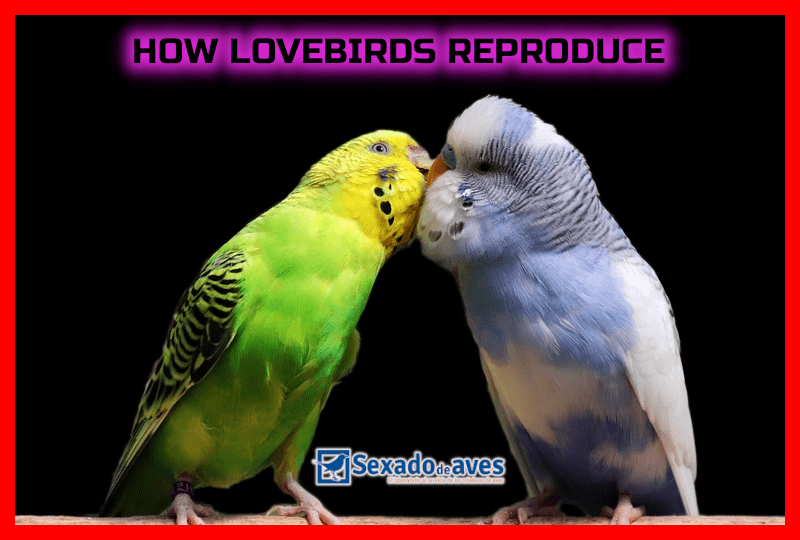
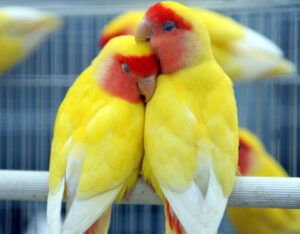 When acquiring two lovebirds with the hope of mating them, we may have several doubts. For example, we may not be sure about which specimens to put together, how long reproduction takes, or even if the birds are male and female. In this article you will find some tips that will help you successfully mate lovebirds.
When acquiring two lovebirds with the hope of mating them, we may have several doubts. For example, we may not be sure about which specimens to put together, how long reproduction takes, or even if the birds are male and female. In this article you will find some tips that will help you successfully mate lovebirds.
The ideal couple
Firstly, the most important thing is to make sure that your birds are male and female. This may seem obvious, but the truth is that anatomy, plumage colour and behaviour are not reliable indicators of a lovebird’s gender. The most reliable way to know that you are attempting to mate a male with a female is to have the sex of your birds genetically identified (DNA test).
Secondly, your mating pair must be of the same species (2 personata, 2 roseicollis e.t.c.) and shouldn’t be relatives. This will increase the possibility that your chicks grow healthily without genetic problems and are themselves capable of reproduction in the future..
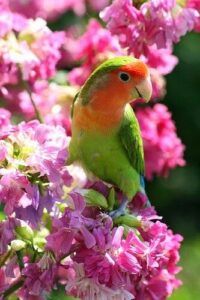
When lovebirds reproduce
Your chosen birds should be at least 1 year old before attempting to mate them. When they reach this age, they will have the sexual maturity necessary to begin reproduction and rearing.
Generally, birds tend to reproduce during spring, although they are physically capable of reproducing at any time of the year.
Where lovebirds reproduce
At this point, we must provide our lovebirds with adequate space so that they can make their nest. This usually consists of a wide wooden box, with an entry hole. We must add some materials such as palm leaves or dry branches for them to build their nest. With these things they can create a comfortable and warm spot that is perfect for egg laying. It is important to put a bathtub inside the cage to add humidity to the environment. Our lovebirds will need this to add moisture to their eggs so that hatching is successful. The nest must be in a calm sp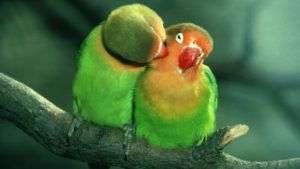 ot, wind free, with natural light and a stable temperature.
ot, wind free, with natural light and a stable temperature.
How lovebirds reproduce
The male courts the female by feeding her. When courtship is successful, mating follows, and a few days later (from 3 to 5 days) the female lays her first egg. At this stage it is important not to get impatient as the courtship process can take longer than one and a half months. As caregivers we need to be patient and respect the courtship process.
Female lovebirds lay between 3 and 8 eggs with hatching occurring about 25 days later. Sometimes the male bird can be seen incubating the eggs. Once the eggs hatch, the chicks may stay within the nest for more than a month, not leaving until they have developed sufficiently to explore the new world around them.
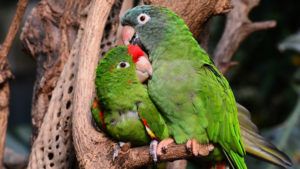
Welcome to the family!
Once our lovebirds are mated we need to think about what we are going to do with their chicks when they arrive. We may decide to keep them, or on the other hand we may choose to give them up for adoption. In any event, at this stage it is necessary to start another new and exciting stage by getting informed about how to raise lovebird chicks so that all their needs are covered.
